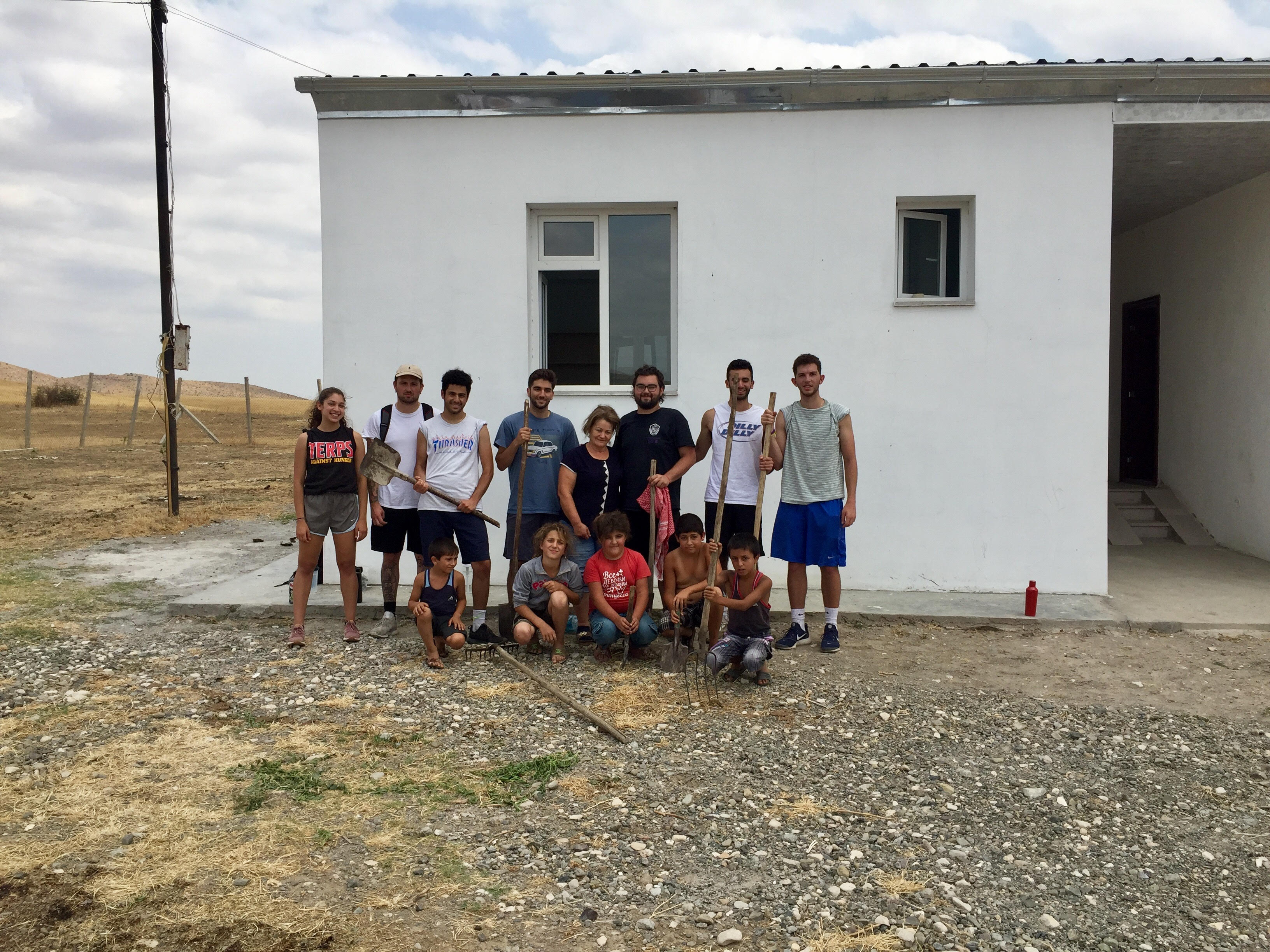
By Sahak Zakarian, Internship Director, Chicago “Ararat” Chapter Alumnus
A two hour drive south of Stepanakert off the beaten path sits a village at the end of the world—the end of the Armenian world, as it seems. Past the great mountains of Artsakh, near the Arax river and border of Iran is Arajamugh—a village of approximately 150 inhabitants. Surrounded by barren hills, dried up riverbeds and countless pockets of abandoned Azeri homes, you will find a newly built oasis among the ruins of the Artsakh War.
Like a patrol tower on the frontline, this entire village stands guard for Artsakh’s southern border. Take a walk through their village school, and you get the sense that this is where heroes are born and bred. Walls lined with war-time safety posters, drawings of tanks and flags and pictures of war heroes from life and myth remind you that the enemy is not far from where these people work, eat, sleep and raise their children. At the head of this crowd of past and future heroes stands an impressive heroine—the village mayor, Digin Shushan.
The average Armenian villager may be perplexed to find a group of young diasporans on their doorstep on a hot August day in a place seemingly in the middle of nowhere, offering to do some yard work. Digin Shushan knew why we were there. She knew our motivation and understood we were there to contribute with our sweat and not our wallets. She was kind and reserved, yet her eyes could not hide her excitement. Our presence, although expected, had shattered the isolation of this place. It was a strange feeling, being so far from home, yet so close to where you belong. The thousands of miles we traveled, the long unpaved road from Hadrut, the vast differences in our lives began to diminish with each moment we spent here.
Digin Shushan guided our group of young interns to their newly-built town hall building and adjacent clinic. As she gave us a tour of this new place, she was describing it with such familiarity to us, as if it were our own home. One of our interns noticed a room with a plaque sponsored by the priest from his church at home in New York. This faraway place was inching closer to our reality. As the conversation grew and she began to learn about each of us and where we were from, she started to list the names of people we knew from our respective chapters and about how they had visited or contributed to Arajamugh. By the time we began to work, it was all so familiar that we felt as though we were working at our agoumps back home.
The mayor’s son brought us a few shovels and a rake, and we began to clean the area surrounding the town hall. We cleared weeds and debris, raked the field, paved and watered the freshly planted pomegranate saplings. Our presence even attracted some of the village kids, who began to trickle in with their own tools in hand to contribute to the improvement of their community space.

After a few hours we had finished the work and headed over to the recently completed soccer field to unwind and spend time with our young helpers. It was there we were met with yet another familiar face; however, this one was from another time and another place. Above the entrance to the field in one foot letters was written: Maral Melkonian Field. Next to the entrance, etched in stone was her image. In that moment, time, space, past and present collided and the familiarity of Ungerouhi Maral’s sweet smile transported us to a time when she was teaching our AYF and Homenetmen kids about Artsakh, the war, and quite possibly this very place.
Although she is no longer physically with us, there she stood, like the immovable force she was in our communities back home, now like a fortress on our frontline. It was an emotional revelation, one we needed to capture and save. So we stood to take a picture with two heroines, one past, one present: Ungerouhi Maral and Digin Shushan. In that moment it all made sense; despite being so far removed from our usual context, we were exactly where we’re meant to be.

Arajamugh is a village in southern Artsakh that was founded in 2004 by the efforts of the Tufenkian Foundation and has since been expanded by the Artsakh Fund of the Armenian Cultural Association of America Eastern USA. So far, they have built 26 homes, a school, town hall office, an athletic field and clinic. There are plans to continually expand the village and its population. The AYF Eastern Region USA has contributed financially to this effort, as well as through community service projects with AYF Interns for the past three years. To support this project, you can donate to the Artsakh Fund Eastern USA.


Wonderful piece, Sahak, about two powerful women.
“In that moment, time, space, past and present collided and the familiarity of Ungerouhi Maral’s sweet smile transported us to a time when she was teaching our AYF and Homenetmen kids about Artsakh, the war, and quite possibly this very place.”
You most certainly got that right – and a generation of DC AYFers and Homenetmenagans can attest to it.
Ungerouhi Maral continues to inspire at Camp Haiastan, in the highlands of Artsakh, in Washington DC and everywhere there are young Armenians committed to ensuring a brighter future for our nation.